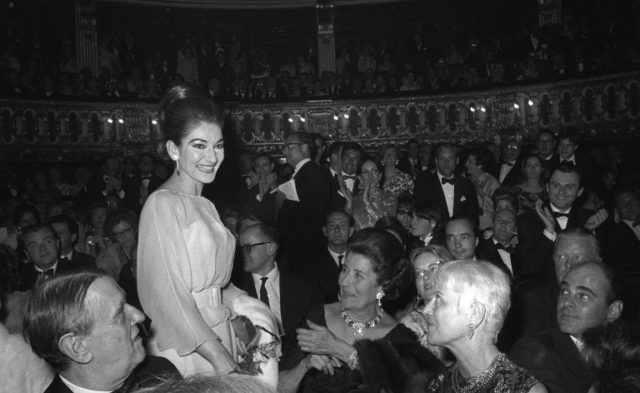New York (AFP) – Maria Callas died in 1977 as a life-weary recluse, her glories on stage long past, but 40 years on her reputation has only grown as one of opera’s defining sopranos.
The anniversary is bringing out a breadth of fresh looks at the Greek American singer nicknamed La Divina including exhibitions, films and a major restoration of her live performances.
The 42-CD box-set by label Warner Classics seizes on technological advances to hone a fuller sound for some of the diva’s signature roles starting from her career breakthrough in Italy in the late 1940s.
“There is still a huge interest in Maria Callas. Of course it’s an interest maybe in her character, but I’m not one who thinks it’s just about a legend outside of her singing,” said Bertrand Castellani, vice president of international catalog at Warner Classics.
With most older opera recordings, Castellani said it only took a brief listen to discern the style and identify the decade of the performance. Not so with Callas.
“This is what makes it current. In her way of approaching opera, she was completely out of her time,” he said.
“By finding the veracity of her characters, she was really a singer for all times. There is nothing related to her era, except of course the quality of the recordings,” he said.
The box-set, “Maria Callas Live Remastered Recordings (1949-1964),” was engineered at the Studio Art et Son in Paris after a hunt for tapes of her performances.
“I think we are very fortunate living in this time because we can still access material that is in good condition — the lifetime of a lot of tapes is not eternal — as well as technology that is far better than in the 1980s or 1990s,” Castellani said.
The box-set offers greater intimacy, with a crisper quality that further reveals La Divina’s vocal powers. Background clutter is drastically reduced and the remastering also straightens out wobbly pitches from the tapes.
– A historic high note –
The collection comes three years after Warner Classics released a remastered set of Callas’ studio recordings. The new box-set offers a window on her dramatic stage persona and includes her early performance of “Parsifal” by Wagner, a composer whom Callas largely avoided.
The box-set remasters one of the historic moments of 20th-century opera — a 1951 performance of “Aida” in Mexico City where Callas thrills the audience by soaring to a surprise, unwritten E-flat to close the second act.
The set ends with “Tosca” in London in 1964, a closing that Castellani described as “respectful” to Callas. She last performed in opera a year afterward as her voice faltered, and her later recitals never won the same acclaim.
Her life was also marred by off-stage drama worthy of her characters. Born in New York to Greek parents, Callas endured a difficult relationship with her mother and struggled with her weight before she drastically slimmed down.
Adding to the media spotlight on her life, Callas left her husband, Giovanni Battista Meneghini, for shipping mogul Aristotle Onassis — who instead married Jacqueline Kennedy.
She shunned the public eye for her final years, dying in her Paris apartment of a heart attack in September 1977. She was 53.
– Icon in fashion –
With her cape-like dresses and bobbed-back hair, Callas also became a style icon — a legacy revisited in exhibitions marking the anniversary of her death in Greece and Italy.
The event at the Theocharakis Foundation in Athens — where Callas, born as Sophia Cecilia Anna Maria Kalogeropoulou, had her start — shows more than 200 gowns, letters and other items from La Divina.
La Scala, opera’s shrine in Milan, dedicated an evening to Callas with testimonials and videos.
And a film, “Maria by Callas,” will come out later this year. Directed by Tom Volf, the documentary aims to tell her story in her own words through years of tracking down archives and speaking to people who knew her.
Stephane Grant, producer of a series on Callas on France Musique public radio, said La Divina was singularly able to bring new life to operas that were already a century old.
Many other performers “were sopranos with these light, fruity voices in the treble and absolutely did not have the dramatic power needed for these roles,” Grant said.
“It’s often said that to sing ‘La Traviata,’ a soprano needs to have three voices. But for Callas, it was like a thousand voices in one.”

COMMENTS
Please let us know if you're having issues with commenting.